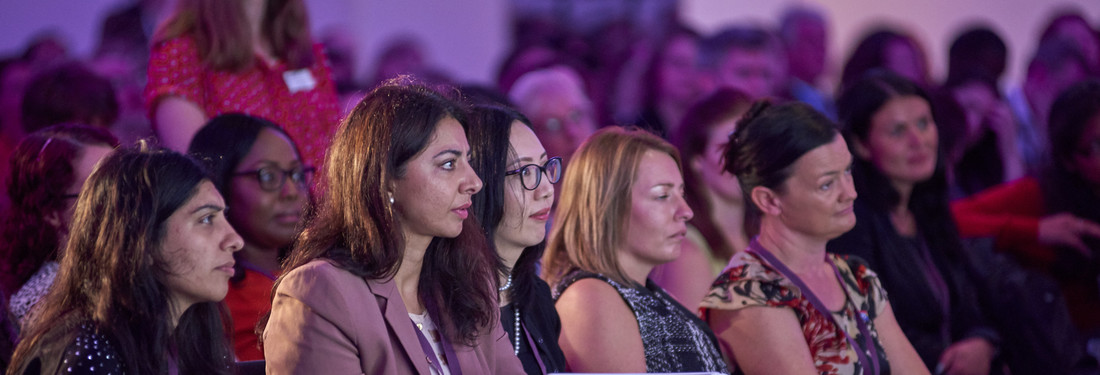Understanding unconscious bias – a silver bullet for equality?

Many of you will probably have heard the following riddle:
A father and his son are involved in a horrific car crash and the man died at the scene. But when the child arrived at the hospital and was rushed into the operating theatre, the surgeon pulled away and said: “I can’t operate on this boy, he’s my son”.
This story – called the surgeon’s dilemma – is a great demonstration of the way that unconscious bias works. The surgeon is the boy’s mother.
Human brains are hard wired to make quick assessments about people and our surroundings. We often do it without even realising. Our culture, gender and life experiences all influence how our brain makes these snap judgements and result in unconscious bias.
Unconscious bias can play an important role in the workplace. Women are no less ambitious or able than men and yet there is still an imbalance in many workplaces between the genders, particularly at management level. Organisations talk about equality and increasing diversity in their teams and yet often struggle to put this into action. One of the reasons for this is unconscious bias.
It is much easier to like and want to work with someone who looks like you, comes from the same background as you or fits your own preconceived norms. Recent research shows that many women felt unconscious bias was a key obstacle to advancing to senior levels. Some of these obstacles relate to preconceived ideas about women as being traditionally seen as nurturers and carers rather than in senior roles. One interviewee said “they’ve been deeply conditioned around what roles women and men can play and we’re all deeply biased. I still find it really hard when I’m talking about CEOs...it’s very, very easy to say he”.
Other obstacles include affinity bias in organisations where there is a ‘boys club culture’. This culture can exclude women from networking opportunities and sponsorship as they are not part of the club. Another interviewee said “I don’t know if it’s even that the men are consciously discriminating against women, I think they are just more comfortable when they get into those senior roles, having people that they’ve worked with before who aren’t going to give them too much grief. I don’t think it’s any more complex than that – they know them from rugby, school, whatever.” The lack of female role models in senior positions also can create a barrier. It’s hard to feel that you can achieve a senior role if there are no others like you in these positions.
How can this be resolved? The big problem with unconscious biases is that they are unconscious. We follow them without even thinking about them which makes them very difficult to identify. There are tests available to help identify unconscious bias in ourselves but identification is only the first step. We have to do something about our biases or nothing will change to improve diversity and equality in our workplaces.
Diversity is important as it has been shown to produce better outcomes. Diversity of thought and approach can allow teams to come up with new and creative solutions. Many high performing teams are made up of people from diverse ethnicities, gender identification and culture. Their diversity can be the backbone of their success as they can look at problems from many perspectives. A lack of diversity can limit the performance of a team as there is a risk of creating an echo chamber where the same approaches and biases are reflected back into the team and become normalised. Groupthink sets in and can become the death knell for creativity. Equality is about opportunity to make the most of every individual’s talents and celebrate their achievements.
So, if we all do unconscious bias training then all our problems should be solved right? Unfortunately, this isn’t necessarily the case. A study from Australia in 2016 interviewed 104 managers. Out of this group 27 had undertaken unconscious bias training but many felt that the training paid “lip service” to gender equality as it did not address the systemic issues driving gender equality in the business. Addressing the deep rooted cultural and systemic sources of bias cannot be solved simply by being sent on a course. Training can help reduce stereotypes but does not necessarily lead to increased gender diversity. People and organisations need to walk the walk as well as talk the talk about diversity.
This International Women’s Day, the theme is choose to challenge. It is all about challenging gender stereotypes and biases, whether conscious or unconscious. My challenge to you is to take this time to look inside both yourself and your organisation and identify the sources of gender bias, seek solutions to overcome them and create a more diverse and equal workplace.
You may also be interested in:
- The Women in Project Management Specific Interest Group
- Harnessing the power of difference (APM Learning 🔒)
- A surprise factor? Diversity as a condition for project success
Evans, K.J. and Maley, J.F. (2020), Barriers to women in senior leadership: how unconscious bias is holding back Australia’s economy. Asia Pac J Hum Resour. https://doi.org/10.1111/1744-7941.12262
Williamson, S. and Foley, M. (2018), Unconscious Bias Training: The ‘Silver Bullet’ for Gender Equity?. Australian Journal of Public Administration, 77: 355-359. https://doi.org/10.1111/1467-8500.12313
Image: WiPM Conference, APM 2019


1 comments
Log in to post a comment, or create an account if you don't have one already.
Great content!